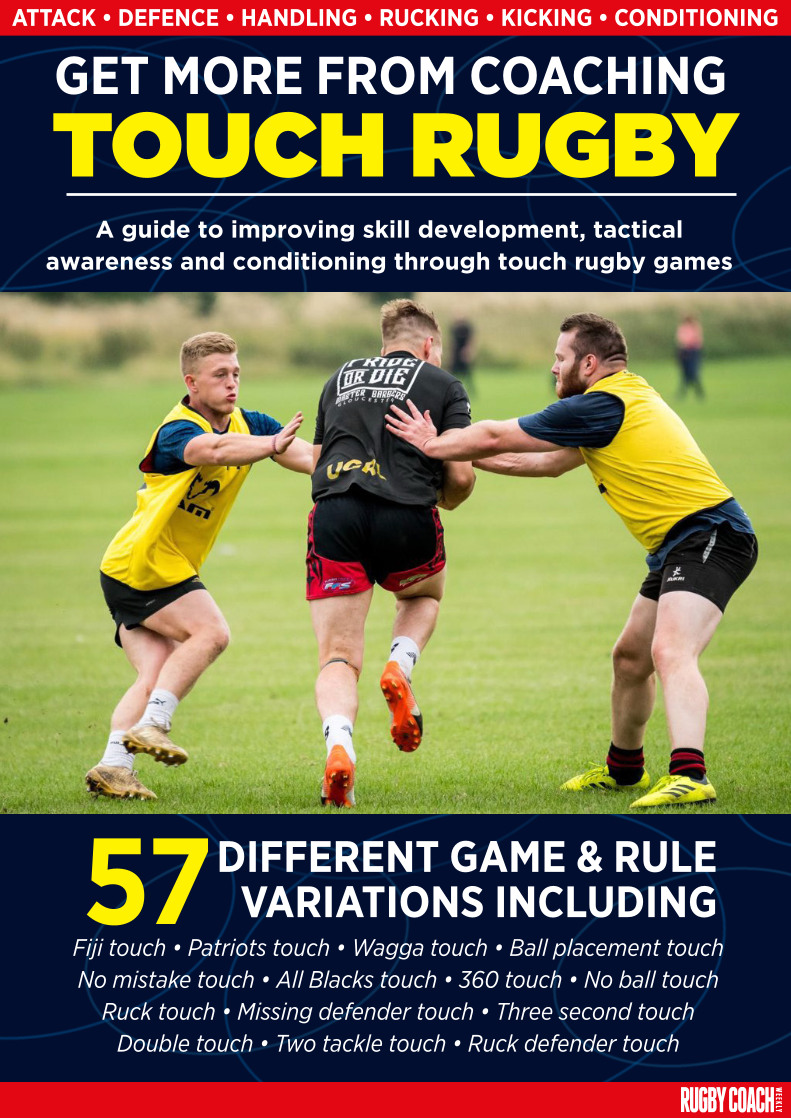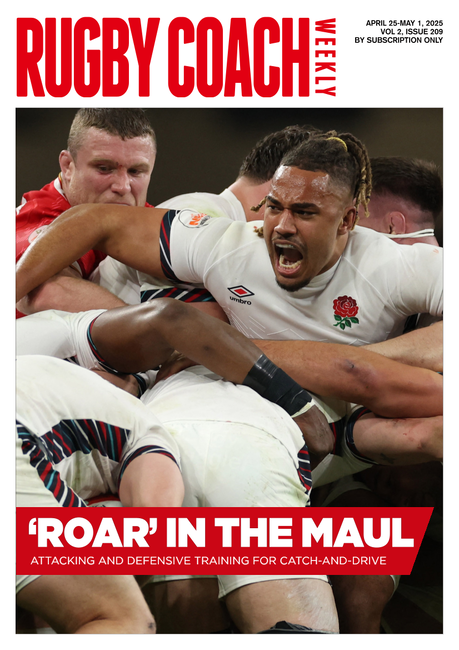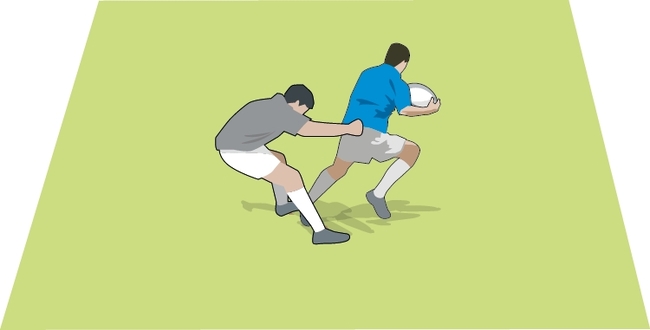Rugby coaching tips on the pros and cons of using the spin pass
1. Speed of pass v speed of delivery
A spinning or spiralling pass should move quicker through the air than a normal pass, according to aerodynamic laws. It will have a flatter trajectory as well.
However, the speed of the ball through the air must be balanced with the time it takes to set up to spin pass the ball. For instance the hands need to be repositioned and the hips turned.
Also the receiver will need to adjust to take a spin pass and be ready to pass the ball on. Two spin passes could easily take as long to move to a wide player as three shorter normal passes.
2. Accuracy and length
A spin pass should go further than a normal pass. However, it might not be as accurate because the shape of the ball and the position of the valve mean that the flight of the ball will be irregular as it spins through the air.
Longer passes will be more difficult to control. On the other hand, with a longer spin pass, the recipient has time to adjust his line of running to catch the ball. Over shorter distances, both passes will only be as accurate as the skill of the passer.
Breaking down the skills into their component parts, a spin pass requires the hands to turnover the ball while the normal pass is more like a push.
Arguably under pressure, pushing the hands towards the target is likely to be more accurate than turning over the hands to spin the ball.
It is also often the case that a player will spin hard off his strong hand and pass normally off his weaker hand, regardless of the circumstances of the game.
3. Overlaps
A spin pass can both create and destroy overlaps. In a three v two, a spin pass can miss out the middle player and get the ball to the player in space wider out.
A spin pass can reach the player in space faster, with a flat trajectory, avoiding the chance of an interception. The danger is that the player marking the middle man simply drifts out.
4. Missing players
Michael O'Connor, head coach of the Australia Rugby Sevens squad, says that "spiral passing" (as it is known in Australia) means that key players can be missed out.
He points out that Stephen Larkham at fly half was skilful enough to spin pass at pace on the gain line, often passing the ball beyond inside centre. The rugby tactic was used consistently and Matt Giteau was often missed out.
The more confident players are with spin passing, the more likely they are to miss out attacking opportunities closer to them.
5. When to use the spin pass
The spin pass has a major role to play in two main areas. First the clearing pass, where it is the role of the scrum half, in most cases, to get the ball away from the base of scrum or ruck, or from a lineout or maul.
Secondly, with more sides kicking in field, the back three of 11, 14 and 15 will need to use spin passes to spread the ball out from the first point of receiving.
Summary
The spin pass cannot be the only pass in the repertoire. The best players need to balance speed and accuracy with using the pass as an attacking weapon to beat opposition players. It is a powerful tool that can reduce options as well as create them.
Click the link to subscribe to International Rugby Coaching and make sure you get articles on rugby tactics, strategies and fitness delivered direct to your inbox every month. International Rugby Coaching is ideal for professional, semi-professional, senior, aspiring and experienced rugby coaches.
Click the link for a rugby coaching session to improve high speed passing.
Thank you for reading
to enjoy 3 free articles,
our weekly newsletter, and a free coaching e-book
Or if you are already a subscriber, login for full access
Newsletter Sign Up
Coaches Testimonials

Gerald Kearney, Downtown Las Vegas Soccer Club

Paul Butler, Florida, USA

Rick Shields, Springboro, USA

Tony Green, Pierrefonds Titans, Quebec, Canada
Subscribe Today
Be a more effective, more successful rugby coach
In a recent survey 89% of subscribers said Rugby Coach Weekly makes them more confident, 91% said Rugby Coach Weekly makes them a more effective coach and 93% said Rugby Coach Weekly makes them more inspired.
Get Weekly Inspiration
All the latest techniques and approaches
Rugby Coach Weekly offers proven and easy to use rugby drills, coaching sessions, practice plans, small-sided games, warm-ups, training tips and advice.
We've been at the cutting edge of rugby coaching since we launched in 2005, creating resources for the grassroots youth coach, following best practice from around the world and insights from the professional game.













